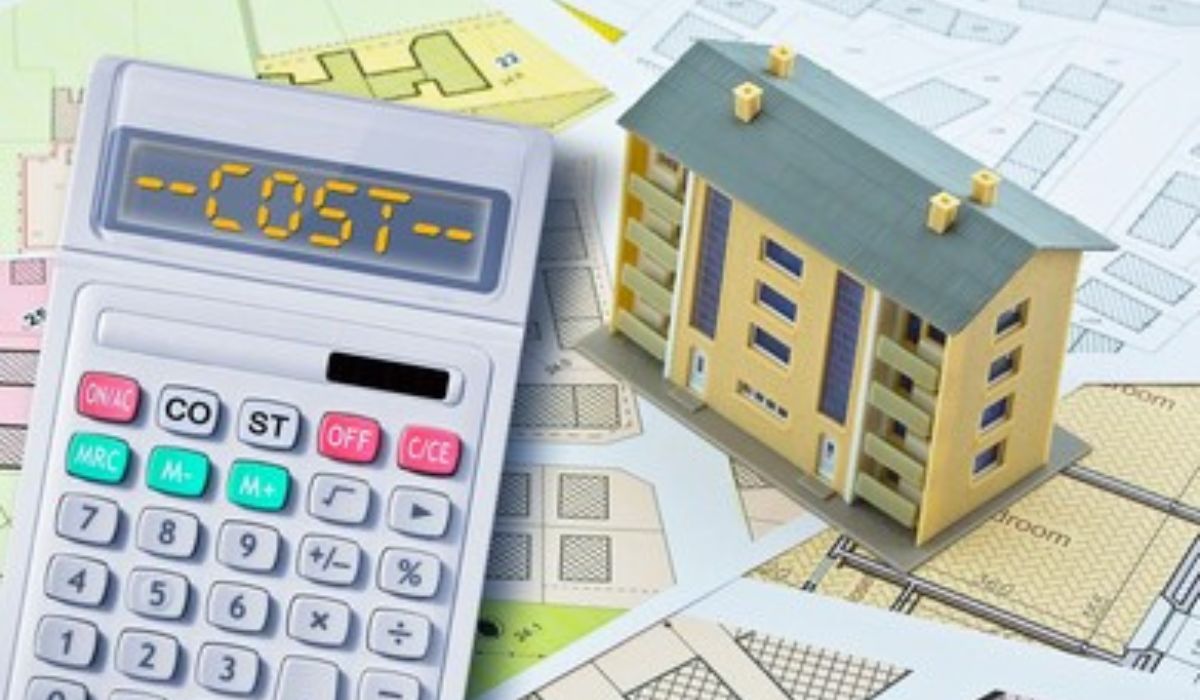Buying an old apartment can be a practical and rewarding decision. However, it comes with its own set of challenges and considerations. From assessing the structural integrity to understanding legal documentation, purchasing a pre-owned apartment demands careful evaluation. Whether you’re a first-time buyer or a seasoned investor, this guide will help you navigate the process smoothly.
Why Should You Consider Buying an Old Apartment?
Old apartments often come with unique advantages:
- Affordable Prices: Older apartments tend to be more budget-friendly compared to new developments in prime areas.
- Prime Locations: Many old apartments are located in the heart of the city with excellent connectivity.
- Spacious Layouts: Older constructions often have larger rooms and better ventilation compared to newer compact designs.
- Established Communities: Pre-owned apartments are usually part of well-developed neighborhoods with schools, markets, and hospitals nearby.
However, you need to ensure that these benefits outweigh potential downsides like maintenance costs or outdated amenities.
Inspecting the Structural Condition: Is the Apartment Safe?

Before proceeding with any purchase, check the apartment’s structural integrity. Here’s how:
- Hire a Professional Inspector: They can identify issues like cracks in walls, weak foundations, or leakage problems.
- Check for Seepage and Dampness: Examine walls, ceilings, and floors for any signs of water damage or mold growth.
- Examine the Age of the Building: If the building is over 20 years old, consult experts to check its structural durability.
- Assess Common Areas: Evaluate the condition of lifts, staircases, and parking lots.
Legal Verification: Are All Documents in Place?

Old apartments often face legal complications, so ensure all necessary paperwork is in order:
- Sale Deed and Title Verification: Confirm the ownership history and check if the title is clear.
- Encumbrance Certificate: This certificate ensures the property is free from any financial or legal liabilities.
- Occupancy Certificate (OC): Ensure the builder has received this certificate to confirm the property is legal.
- Society NOC: Get a No Objection Certificate from the housing society for the transaction.
- Pending Dues: Check if there are any pending utility bills, property taxes, or maintenance fees.
Maintenance Costs: Can You Afford the Upkeep?

Old apartments usually require more maintenance. To avoid future surprises:
- Evaluate the Condition of Fixtures: Check plumbing, wiring, and flooring for signs of wear and tear.
- Inquire About Recent Repairs: If major renovations have already been done, future costs may be minimal.
- Understand Society Charges: Older societies may charge higher maintenance fees to cover aging infrastructure.
- Plan for Unexpected Expenses: Allocate a budget for unforeseen repairs or upgrades.
Amenities and Lifestyle: Does It Meet Modern Expectations?

While older apartments may lack swanky clubhouses or gyms, they often compensate with:
- Larger Balconies and Open Areas: Spacious designs that newer apartments may not offer.
- Mature Greenery: Established gardens and tree-lined streets.
- Community Bonding: Long-term residents who share a sense of community.
However, assess if essential amenities like parking spaces, security systems, and water supply are sufficient.
Connectivity and Location: Is It Convenient for Daily Life?

The location of an old apartment can often be a huge advantage. Here’s what to look for:
- Proximity to Public Transport: Ensure easy access to metro stations, bus stops, or train stations.
- Neighborhood Infrastructure: Check for nearby schools, hospitals, markets, and recreational areas.
- Future Development Plans: Research upcoming projects in the area that could enhance or hinder its livability.
Renovation Potential: Can You Customize It to Your Liking?

One of the perks of buying an old apartment is the potential for renovations:
- Plan for Upgrades: Assess whether the layout allows for structural modifications like knocking down walls or extending rooms.
- Consult an Architect: They can suggest design ideas to modernize the apartment while preserving its charm.
- Check Building Restrictions: Some older societies may have restrictions on renovations.
Resale Value and Investment Potential: Is It a Smart Financial Move?

Old apartments can be a great long-term investment if purchased wisely:
- Location Value: Properties in central areas typically retain their value.
- Rental Income: Older apartments in high-demand neighborhoods often fetch decent rental income.
- Evaluate Market Trends: Analyze real estate trends in the area before making a decision.
Society Rules and Bye Laws: Will They Impact Your Lifestyle?

Understand the housing society’s policies:
- Tenant Policies: Some societies have restrictions on renting out apartments.
- Pet Rules: Ensure the society is pet-friendly if you have furry companions.
- Cultural Fit: Older societies may have traditional rules that might affect your lifestyle.
Budgeting and Financing: Are You Financially Prepared?

Finally, plan your finances effectively:
- Check Loan Eligibility: Ensure banks are willing to finance old apartments in that area.
- Negotiate the Price: Sellers of old apartments are often open to negotiation.
- Account for Registration and Legal Fees: These can add significantly to the final cost.
Conclusion
Buying an old apartment can be a fulfilling experience if you approach it systematically. By evaluating the structural condition, legal aspects, and renovation potential, you can ensure that your investment is worthwhile. Remember to factor in maintenance costs, society rules, and future resale value before finalizing your decision.
At Housiey, we aim to simplify your home-buying journey by connecting you directly with trusted builders and sellers without involving brokers, making the process transparent and hassle-free. To explore more tips and insights.
Don’t forget to check out our blog on “Selling Under Construction Properties“ for valuable advice!
FAQs
Buying an old apartment can be a practical and rewarding decision. However, it comes with its own set of challenges and considerations. From assessing the structural integrity to understanding legal documentation, purchasing a pre-owned apartment demands careful evaluation. Whether you’re a first-time buyer or a seasoned investor, this guide will help you navigate the process smoothly.
Why Should You Consider Buying an Old Apartment?
Old apartments often come with unique advantages:
- Affordable Prices: Older apartments tend to be more budget-friendly compared to new developments in prime areas.
- Prime Locations: Many old apartments are located in the heart of the city with excellent connectivity.
- Spacious Layouts: Older constructions often have larger rooms and better ventilation compared to newer compact designs.
- Established Communities: Pre-owned apartments are usually part of well-developed neighborhoods with schools, markets, and hospitals nearby.
However, you need to ensure that these benefits outweigh potential downsides like maintenance costs or outdated amenities.
Inspecting the Structural Condition: Is the Apartment Safe?

Before proceeding with any purchase, check the apartment’s structural integrity. Here’s how:
- Hire a Professional Inspector: They can identify issues like cracks in walls, weak foundations, or leakage problems.
- Check for Seepage and Dampness: Examine walls, ceilings, and floors for any signs of water damage or mold growth.
- Examine the Age of the Building: If the building is over 20 years old, consult experts to check its structural durability.
- Assess Common Areas: Evaluate the condition of lifts, staircases, and parking lots.
Legal Verification: Are All Documents in Place?

Old apartments often face legal complications, so ensure all necessary paperwork is in order:
- Sale Deed and Title Verification: Confirm the ownership history and check if the title is clear.
- Encumbrance Certificate: This certificate ensures the property is free from any financial or legal liabilities.
- Occupancy Certificate (OC): Ensure the builder has received this certificate to confirm the property is legal.
- Society NOC: Get a No Objection Certificate from the housing society for the transaction.
- Pending Dues: Check if there are any pending utility bills, property taxes, or maintenance fees.
Maintenance Costs: Can You Afford the Upkeep?

Old apartments usually require more maintenance. To avoid future surprises:
- Evaluate the Condition of Fixtures: Check plumbing, wiring, and flooring for signs of wear and tear.
- Inquire About Recent Repairs: If major renovations have already been done, future costs may be minimal.
- Understand Society Charges: Older societies may charge higher maintenance fees to cover aging infrastructure.
- Plan for Unexpected Expenses: Allocate a budget for unforeseen repairs or upgrades.
Amenities and Lifestyle: Does It Meet Modern Expectations?

While older apartments may lack swanky clubhouses or gyms, they often compensate with:
- Larger Balconies and Open Areas: Spacious designs that newer apartments may not offer.
- Mature Greenery: Established gardens and tree-lined streets.
- Community Bonding: Long-term residents who share a sense of community.
However, assess if essential amenities like parking spaces, security systems, and water supply are sufficient.
Connectivity and Location: Is It Convenient for Daily Life?

The location of an old apartment can often be a huge advantage. Here’s what to look for:
- Proximity to Public Transport: Ensure easy access to metro stations, bus stops, or train stations.
- Neighborhood Infrastructure: Check for nearby schools, hospitals, markets, and recreational areas.
- Future Development Plans: Research upcoming projects in the area that could enhance or hinder its livability.
Renovation Potential: Can You Customize It to Your Liking?

One of the perks of buying an old apartment is the potential for renovations:
- Plan for Upgrades: Assess whether the layout allows for structural modifications like knocking down walls or extending rooms.
- Consult an Architect: They can suggest design ideas to modernize the apartment while preserving its charm.
- Check Building Restrictions: Some older societies may have restrictions on renovations.
Resale Value and Investment Potential: Is It a Smart Financial Move?

Old apartments can be a great long-term investment if purchased wisely:
- Location Value: Properties in central areas typically retain their value.
- Rental Income: Older apartments in high-demand neighborhoods often fetch decent rental income.
- Evaluate Market Trends: Analyze real estate trends in the area before making a decision.
Society Rules and Bye Laws: Will They Impact Your Lifestyle?

Understand the housing society’s policies:
- Tenant Policies: Some societies have restrictions on renting out apartments.
- Pet Rules: Ensure the society is pet-friendly if you have furry companions.
- Cultural Fit: Older societies may have traditional rules that might affect your lifestyle.
Budgeting and Financing: Are You Financially Prepared?

Finally, plan your finances effectively:
- Check Loan Eligibility: Ensure banks are willing to finance old apartments in that area.
- Negotiate the Price: Sellers of old apartments are often open to negotiation.
- Account for Registration and Legal Fees: These can add significantly to the final cost.
Conclusion
Buying an old apartment can be a fulfilling experience if you approach it systematically. By evaluating the structural condition, legal aspects, and renovation potential, you can ensure that your investment is worthwhile. Remember to factor in maintenance costs, society rules, and future resale value before finalizing your decision.
At Housiey, we aim to simplify your home-buying journey by connecting you directly with trusted builders and sellers without involving brokers, making the process transparent and hassle-free. To explore more tips and insights.
Don’t forget to check out our blog on “Selling Under Construction Properties“ for valuable advice!
FAQs













